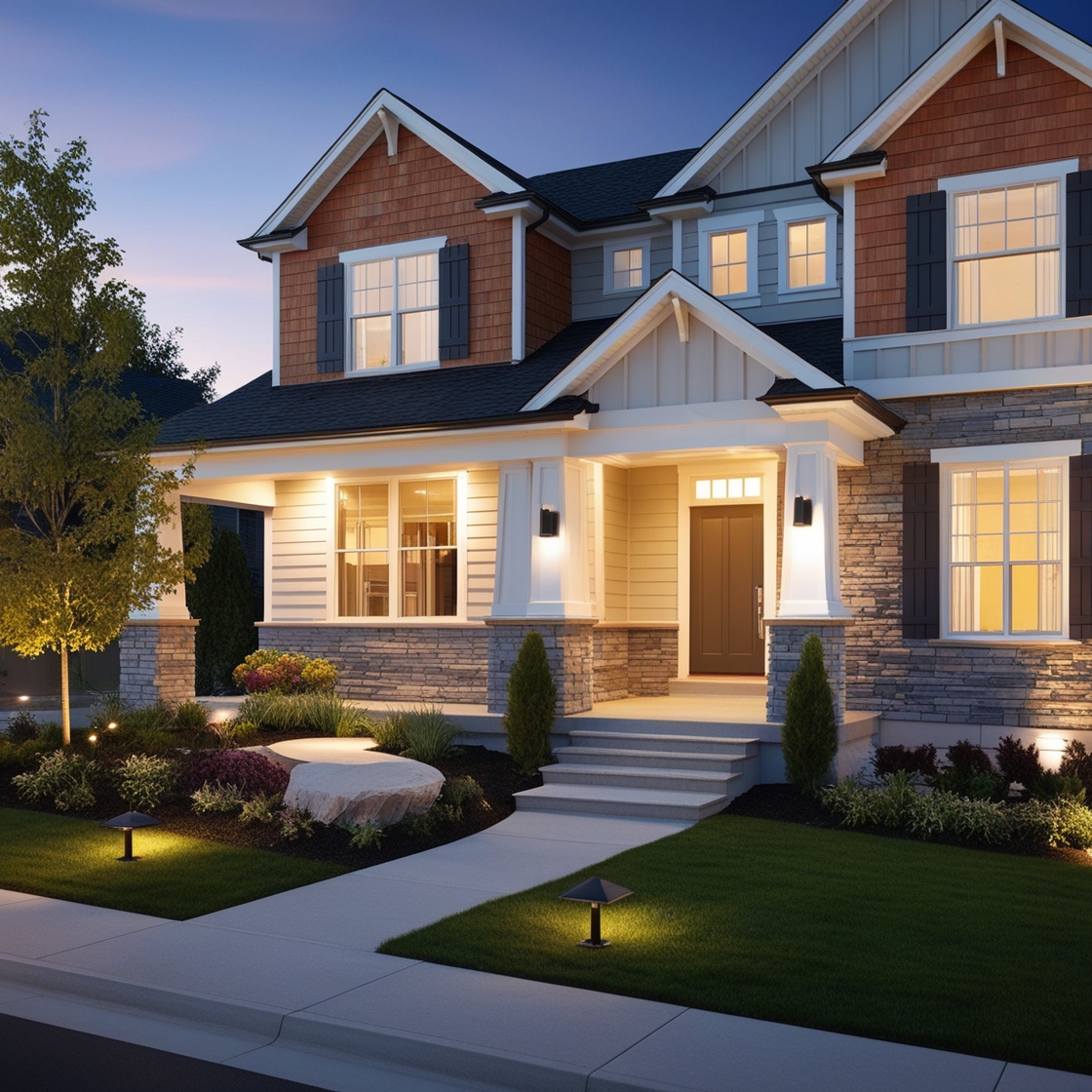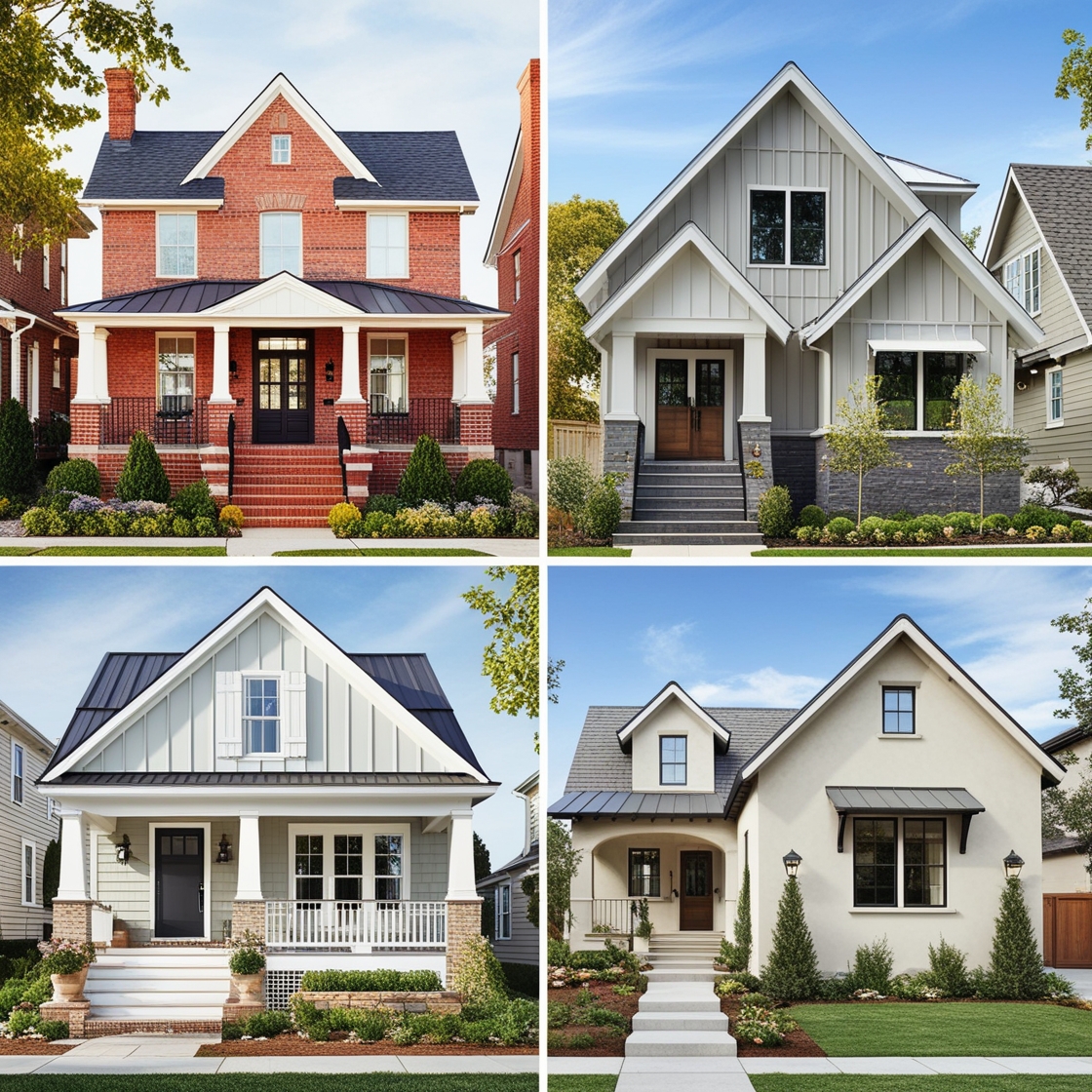When it comes to the exterior design of your home, first impressions matter. The exterior is the first thing people see, and it sets the tone for the rest of your property. However, even the most well-intentioned homeowners can make mistakes that detract from their home’s curb appeal. Whether you’re planning a full-scale renovation or just a few updates, avoiding these common exterior design mistakes will help you create a welcoming and cohesive look that enhances your home’s value and aesthetic appeal.
1. Ignoring the Architectural Style
One of the most significant mistakes homeowners make is choosing exterior elements that clash with the home’s architectural style. For instance, installing ultra-modern windows on a classic Victorian house can look jarring. To avoid this, always consider the original style of your home. If you want to modernize or add unique features, do so in a way that complements the existing architecture.
2. Mismatched Exterior Materials
Choosing the wrong materials or mixing too many different types can lead to a disjointed appearance. For example, combining brick, wood, and stone can overwhelm the eye if not done carefully. The key is balance—stick to two or three materials that harmonize with each other. It’s also essential to consider the durability and suitability of materials for your climate, ensuring they will age well and maintain their appearance over time.
3. Poor Color Choices
Color is a powerful tool in exterior design, but it can also be a pitfall. Choosing colors that clash or are too bold can make your home stand out for the wrong reasons. Similarly, opting for colors that are too bland can make your home look uninspired. The trick is to find a color scheme that enhances your home’s architecture and surroundings. Neutral tones with a pop of color on the front door or shutters are often a safe bet.
4. Neglecting the Landscape
Your home’s landscape is an extension of its exterior, and neglecting it can undermine your efforts. A well-maintained garden, properly placed trees, and a manicured lawn can enhance the overall look of your home. On the other hand, overgrown shrubs, weeds, and a lack of greenery can detract from it. Consider the size and style of your home when planning your landscape, ensuring it complements and enhances the overall design.
5. Disproportionate Features
Scale is crucial in exterior design. Features that are too large or too small can throw off the balance of your home’s appearance. For example, oversized columns on a small porch can look awkward, while tiny windows on a large facade can seem out of place. Pay attention to the proportions of your home and ensure that all elements—windows, doors, trim, and landscaping—are in harmony with each other.
6. Forgetting About Functionality
Design should never come at the expense of functionality. Features like walkways, driveways, and lighting not only need to look good but also serve a practical purpose. A beautifully designed home that is difficult to navigate or poorly lit can be frustrating for residents and visitors alike. When planning your exterior design, think about how people will use the space and ensure that it is both aesthetically pleasing and functional.
7. Inadequate Lighting
Exterior lighting is often an afterthought, but it plays a crucial role in the overall look and safety of your home. Poorly lit exteriors can make your home feel unwelcoming and unsafe. Invest in good-quality lighting that highlights your home’s best features, provides security, and ensures that pathways and entry points are well-lit. Consider a mix of ambient, task, and accent lighting to create a warm and inviting atmosphere.
8. Overlooking Maintenance Needs
No matter how beautiful your exterior design is, it won’t stay that way if you don’t maintain it. Homeowners often overlook the maintenance requirements of different materials and features. For example, wood siding and trim may require regular painting and sealing, while metal features might need rust prevention. Choose materials that you can realistically maintain and ensure that you have a plan in place for regular upkeep.
9. Neglecting the Front Door
The front door is a focal point of your home’s exterior, yet it’s often overlooked in design plans. A dull or outdated front door can detract from your home’s curb appeal, even if the rest of the exterior is well-designed. Consider updating your front door with a fresh coat of paint, a new design, or quality hardware to create a welcoming entrance that sets the tone for your home.
10. Overdoing It with Trends
While it’s tempting to incorporate the latest design trends, be cautious about overdoing it. Trends come and go, but your home’s exterior should stand the test of time. Choose timeless elements and incorporate trends in small, easy-to-update areas like paint color or landscaping. This approach ensures that your home remains stylish without quickly becoming outdated.





